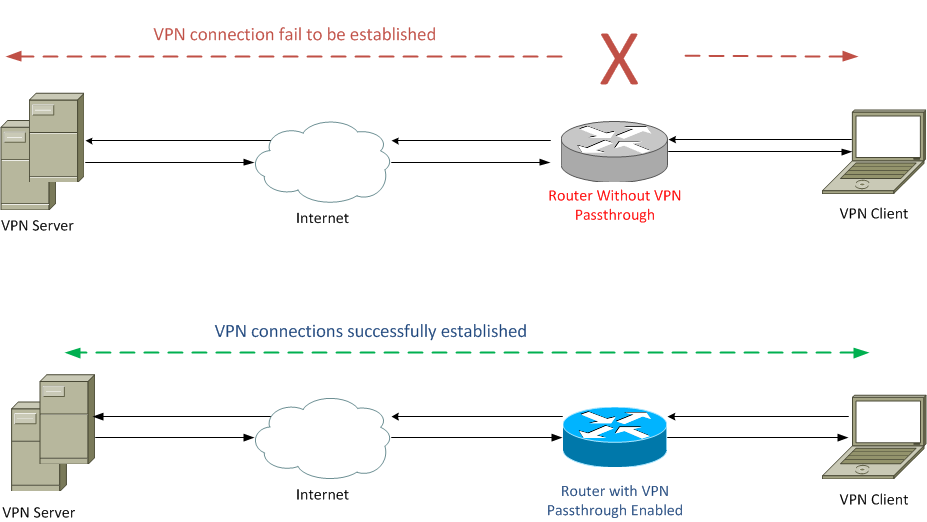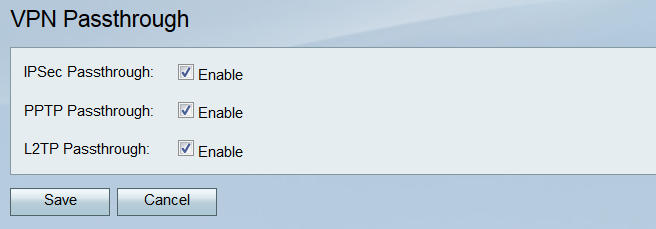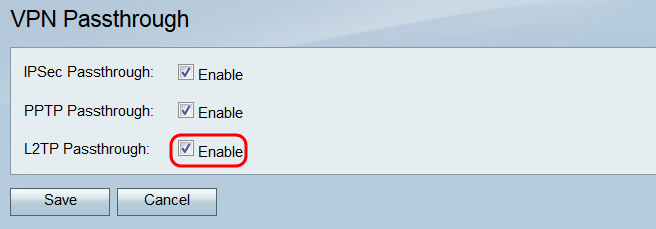Configuration of Virtual Private Network (VPN) Passthrough on the RV130 and RV130W Routers
Available Languages
Objective
A VPN Passthrough allows VPN traffic to pass through a device and allow clients to connect to the VPN server. VPN Passthrough is required for a VPN connection to be successful, since the RV130 and RV130W use NAT (Network Address Translation).
Before configuring VPN Passthrough, a VPN must already be set up on your device. To learn how to configure a VPN, refer to the article Basic VPN Setup on RV130 and RV130W.

The objective of this document is to show you how to enable or disable VPN Passthrough on the RV130 and RV130W Routers.
Applicable Devices
• RV130
• RV130W
Software Version
• v1.0.1.3
Enable or Disable VPN Passthrough
Step 1. Log into the web configuration utility and choose VPN > VPN Passthrough. The VPN Passthrough page opens:

Step 2. In the IPSec Passthrough field, the Enable check box is checked by default. IPSec (Internet Protocol Security) is a suite of protocols that allows secure exchange of packets. If you do not want any IPSec traffic to pass through the device, uncheck this check box.

Step 3. In the PPTP Passthrough field, the Enable check box is checked by default. PPTP (Point-to-Point Tunneling Protocol) is a way to transmit PPP (Point-to-Point Protocol) packets over a VPN. If you do not want any PPTP traffic to pass through the device, uncheck this box.

Step 4. In the L2TP Passthrough field, the Enable check box is checked by default. L2TP (Layer 2 Tunneling Protocol) is a tunneling protocol used to transmit PPP packets in VPNs. If you do not want any L2TP traffic to pass through the device, uncheck this box.

Step 5. Click Save to save any changes made on VPN Passthrough page.

Revision History
| Revision | Publish Date | Comments |
|---|---|---|
1.0 |
13-Dec-2018 |
Initial Release |
 Feedback
Feedback